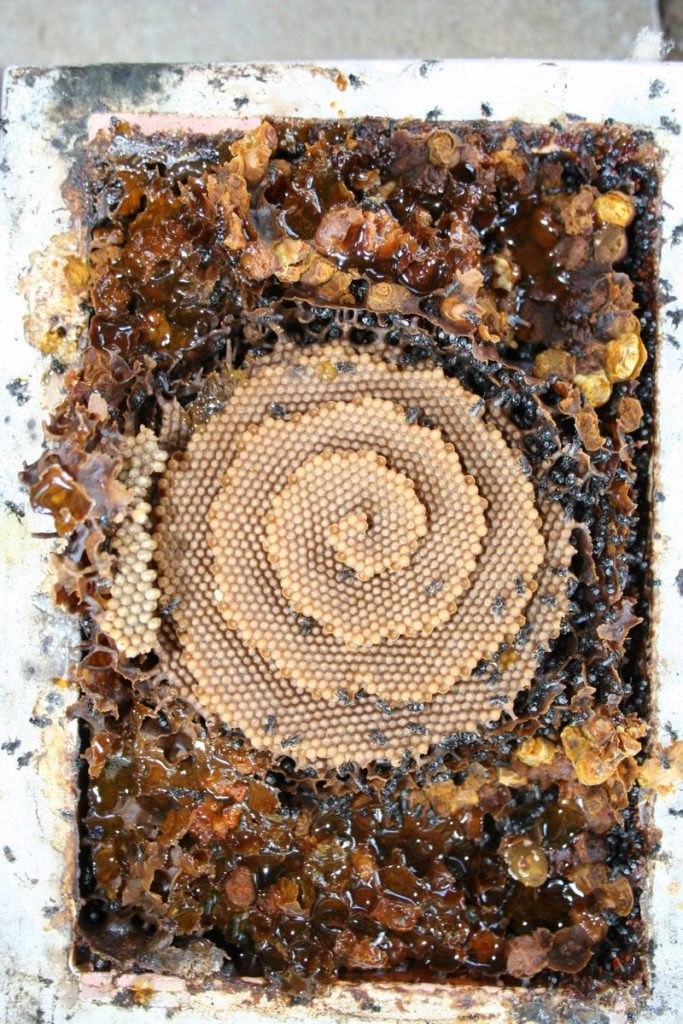
Not all bees are alike, there are about 20,000 species of the flying insect. About 500 bee species have lost the ability to sting. But, they have other defensive behaviors like biting, showering intruders with wax, mud, or plant resin. Sometimes their sheer numbers can drive away unwanted intruders. You definitely don’t want to wait around to find out if they are the stingless type. 14 of the stingless bees are native to Australia. The sugarbag bee or bush bee is the most interesting as they are known for the amazing spiral hives they make.
These sugarbag bees (tetragonula carbonaria) are smaller in size than other stingless bees. Predominantly black in color, their bodies are covered with microscopic hairs. The hives they create are broad and flat, but each spiral rises in height as they turn, giving the conical shape. Fully developed ones may consist of around 20 spirals, and is a sight to behold. The hives have only one entrance which is coated with a mixture of beeswax and resins.It is heavily guarded by guard bees to protect the hive from ants and other insects.

It is not exactly known why the hives of sugarbag bees are spiral. One explanation suggests that it may be to make air circulation better, as most bee colonies are not well ventilated. “Perhaps it is the outcome of some random behavior or perhaps it is adaptive. A possible adaptive advantage of this form is that it is efficient use of space and also facilitates the circulation of air between the layers. But then one has to ask, why it is not more common,” Tim Heard, an entomologist told Live Science.

Being that stingless bees don’t sting, many Australian suburban homes have these beehives in their backyards. Not really for the honey (although it is a sweet benefit for sure), but more for the pleasure of conserving a native species whose original habitat is diminishing due to human development. In return, the bees pollinate crops, flowers, and bushland in their search for pollen and nectar. Truly a symbiotic relationship.


